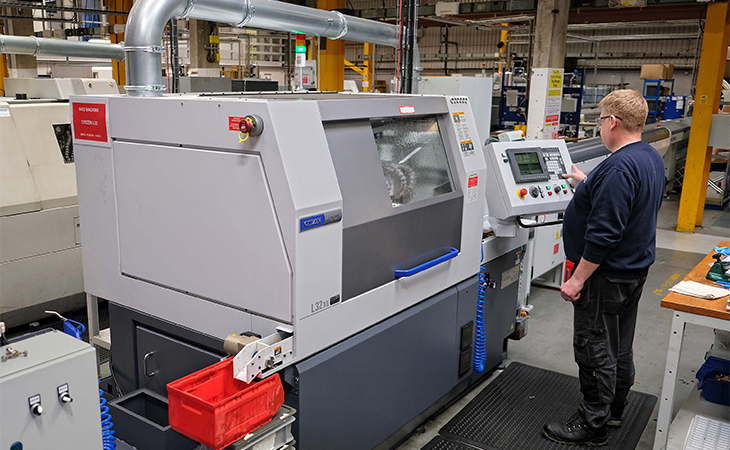
When non-core business operations are outsourced to outside service providers, this is referred to as business process services (BPS). These procedures can include everything from payroll and accounting to customer service and technical assistance. BPS aims to boost operational effectiveness, cut costs, and free up resources so businesses may concentrate on their core capabilities. However, without process standardization and automation, accomplishing these objectives might be difficult.
Companies are continuously seeking methods to optimize their processes and cut expenses in today’s fast-paced business environment. Process standardization and automation in bpo services are two ways to do this. The significance of process standardization and automation in BPS and how it might help enterprises will be covered in this blog. Next-Gen BPO services by Tech Mahindra can help businesses to maximize the profit.
Process standardization is creating a set of rules and best practices to guarantee uniformity in the way a specific process is carried out. Companies can develop repeatable processes that result in improved levels of consistency throughout their operations by clearly defining objectives for each process stage and explicit measurements to assess progress towards those goals. Companies can profit from standardizing processes in a number of ways, including:
- Consistency – Regardless of their location or job role, all employees must adhere to the same procedures thanks to standardized processes. This ensures that the client experience is the same throughout the organization and that output quality is consistent.
- Efficiency – Standardizing procedures can assist cut down on time spent on repetitive steps by removing them. This may result in shorter turnaround times, more production, and cheaper prices.
- Compliance – Standardized procedures aid in ensuring that businesses abide by both internal and external rules. Organizations can lower the risk of non-compliance and related fines by documenting procedures and making them available to staff.
On the other hand, business process automation entails employing technology to automate specific steps in a process. This can involve automating the transfer of data between various systems or employing software to carry out repetitive operations. By removing manual operations from their workflow, such as data entry and document processing, automation is essential in enabling firms to standardize processes at scale. By lowering human error associated with manually doing repeated operations, automation also helps maintain high levels of accuracy. This boosts overall productivity while assuring regulatory compliance.
Since jobs are completed more quickly without compromising quality standards, automating some business operations can also help companies shorten turnaround times for clients, which will eventually lead to higher customer satisfaction ratings. Business process automation can increase productivity, decrease errors, and free up workers to concentrate on more difficult jobs. Organizations can profit from automation in a number of ways, including:
- Scalability: With little to no human involvement, automated systems can manage high numbers of transactions and tasks. This implies that businesses can grow without adding more staff.
- Accuracy: Compared to manual operations, automated processes are less prone to mistakes. This can assist businesses in lowering error rates and related expenses like rework and client complaints.
- Cost savings: Automation can assist businesses in cutting labour costs as well as other related costs like printing and shipping costs.
Process standardization and automation have many advantages. Last but not least, implementing standardized & automated business process services enables organizations to gain a competitive advantage over rivals who might still be using antiquated transaction handling methods, allowing them to build upon existing market position while simultaneously creating conditions necessary to innovate faster than ever before realizing long-term sustainable growth trajectory within industry space. Implementing these ideas, though, can be difficult. Here are some pointers for putting process standardization and automation in business process services (BPS) successfully:

- Identify the processes to standardize and automate – Selecting the processes that are most appropriate for standardization and automation is the first stage in the implementation of these efforts. This can be achieved by carrying out a process audit, which entails examining current procedures to find room for improvement.
- Create a roadmap for standardization and automation – After identifying the processes to standardize and automate, the following stage is to create a plan for carrying out these activities. The roadmap should include a date for each stage as well as the measures necessary to standardize and automate each process in bpo services.
- Employee participation in the process of standardization and automation – The finest source of knowledge on how to enhance a process is frequently an employee who is directly involved in it. Employee participation in the standardization and business process automation process can help guarantee that the modifications are practical and pertinent.
- Invest in the correct technology – Business process automation demands technology in bpo services, therefore it’s critical to do your research before making a purchase decision. This can entail investing in new gear or software, or it might entail collaborating with a partner in technology to create unique solutions.
- Monitor and evaluate the effects of process standardization and automation – Once procedures have been standardized and automated, it’s crucial to evaluate and evaluate the effects of such modifications. Key performance indicators (KPIs), such as response time, error rates, and customer satisfaction levels, can be used to achieve this.
In conclusion, business process automation and process standardization are crucial elements of successful business process services (BPS). These initiatives can aid businesses in increasing operational effectiveness, cutting expenses, and freeing up resources so they can concentrate on their core capabilities. However, putting these initiatives into action can be difficult. To ensure continuous improvement and the greatest possible benefits, it is crucial to take a structured approach that includes choosing the best processes, involving employees in the procedure, investing in the right technology, and monitoring and measuring the impact of standardization and business process automation. Process standardization and automation may revolutionize business process services (BPS) and give an advantage in the current fast-paced business climate with the right strategy and implementation.





